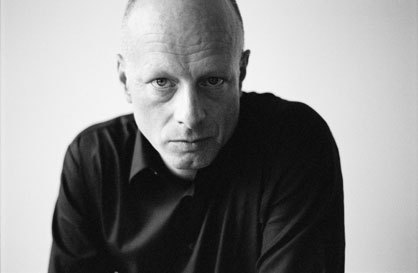Investigating the nature of things
Text by Caspar Schärer
Switzerland
08.07.08
On the death of Hannes Wettstein (1958-2008) by Caspar Schärer
For the past twenty years Hannes Wettstein has had a decisive influence on Swiss design while himself, however, staying very much in the background. In the night from Friday to Saturday the 50-year old designer died of cancer.
Although he successfully designed lamps, chairs and hundreds of other objects ever since the mid-Eighties, Wettstein's designs were never so prominently connected with his name as is now generally the case with contemporary designers. As a result his influence and his effect on the younger Swiss design scene have been much greater than his modesty would suggest. His approach was a pragmatic one, dedicated to the service of the users of his products, whom he preferred to provide with well thought-through everyday objects instead of burdening them with elaborate form.
This doesn't mean that Wettstein wasn't interested in form, even when he himself always denied having his own formal signature. In one of his most recent projects in particular Wettstein is highly recognisable: the seven set designs which he developed for Swiss television are characterised by a rather cool and matter-of-fact formal language, occasionally accompanied by an extravagant gesture. The command centre of the TV newsroom and the unadorned design of the «Meteo» rooftops flicker in hundreds of thousands of living rooms every evening, defining the image of a TV station which is modern and cool but at the same time conscious of tradition.
Hannes Wettstein's progress to becoming one of Switzerland's most high-profile designers with an international impact was by no means predestined, and is mainly thanks to his perseverance and untiring curiosity. As a structural engineering draughtsman his self-taught design skills enabled him to break into the closed circle of designers and to set up his own business at the age of 24 in 1982. His exceptional career began with an invention which was to generate millions of copies later. The «Metro» lighting system for Belux enables small, high-performance lamps to be freely positioned on two parallel wires. As the electricity supply for the lamps is transmitted via the wires they no longer need to be fastened to the ceiling.
Wettstein was able to place his designs with prestigious Italian furniture manufacturers from an early stage. The «Juliette» chair for Baleri Italia – the simplest design imaginable made of thin steel and with a pleasantly rounded backrest – immediately became a classic and established the reputation of its creator. In the years which followed Wettstein gradually expanded his portfolio and developed a wide interest in all sorts of objects. In addition to numerous pieces of furniture he was in particular highly active in the field of product design, among other things creating ballpoint pens for Lamy, field glasses for Carl Zeiss, loudpeakers for Piega and a bicycle for Velobaze.
Wettstein went through the world which he helped to shape with his eyes wide open, constantly trying to penetrate to the essential nature of things. He once stated: «I enquire less about the objects which are to be designed, and more about the way of life they will be part of». Such a radical modus operandi requires much more than a superficial glance and an eye for the latest trends. Hannes Wettstein set the trends himself by sometimes spending years of research into a material or technique in order finally to reach a synthesis which would lead to a genuine prototype, a new typology.
However, in all his fundamental analytical and research work Wettstein never pursued any kind of dogma, either in design or social terms. He didn't impose his objects on the world and instead allowed them to speak for themselves, providing them with an unshakeable natural presence which created a surprise with every new design. And he succeeded in crossing the divide between the individual product and the overall interior design concept, with orders coming in ever faster in recent years for integral spatial designs such as those undertaken for the Kurz chain of jewellers, the Novartis Campus in Basle and the Prime Tower in Zurich, which when completed will be Switzerland's highest building. There would still have been a lot left for the fifty-year old Hannes Wettstein to achieve if his life had not come to an abrupt and premature end last weekend.







